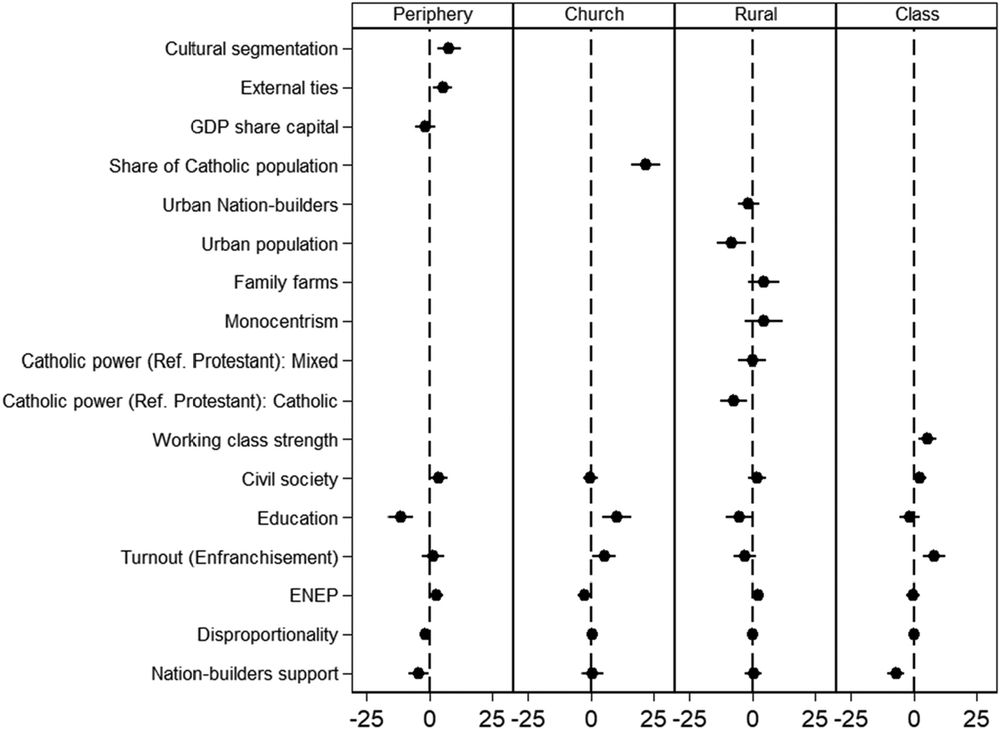

A cleavage must meet 3 criteria:
1️. Socio-structural
2️. Normative (Shared group identity)
3️. Organisational (Having political representation)
No cherry-picking. We assess all conflicts using the same standards. 🔍

A cleavage must meet 3 criteria:
1️. Socio-structural
2️. Normative (Shared group identity)
3️. Organisational (Having political representation)
No cherry-picking. We assess all conflicts using the same standards. 🔍
With Mirko Crulli, we explore the structure of political cleavages in Western Europe — bringing Rokkan’s classic theory into the 21st century.
🔗 www.tandfonline.com/doi/full/10....
Here are the main takeaways 👇

With Mirko Crulli, we explore the structure of political cleavages in Western Europe — bringing Rokkan’s classic theory into the 21st century.
🔗 www.tandfonline.com/doi/full/10....
Here are the main takeaways 👇




📚 Education
🤝 Civil society strength
📊 Electoral system disproportionality
🧩 Party system fragmentation
These shape the contexts in which cleavages consolidate — or fail to.

📚 Education
🤝 Civil society strength
📊 Electoral system disproportionality
🧩 Party system fragmentation
These shape the contexts in which cleavages consolidate — or fail to.
✅ Cultural segmentation explains centre-periphery structuring ✅ Catholicism shapes religious cleavage ✅ Urbanisation matters for the rural one
But Some classic assumptions don’t hold❌ Farm size isn’t a key predictor of rural cleavage structuring

✅ Cultural segmentation explains centre-periphery structuring ✅ Catholicism shapes religious cleavage ✅ Urbanisation matters for the rural one
But Some classic assumptions don’t hold❌ Farm size isn’t a key predictor of rural cleavage structuring
The “freezing” of cleavages between the 1920s and 1960s?
🧊 Not quite.
Only the centre-periphery cleavage shows stability — and at very low levels.
The others show ups and downs. Class cleavage becomes more and more structured over time.

The “freezing” of cleavages between the 1920s and 1960s?
🧊 Not quite.
Only the centre-periphery cleavage shows stability — and at very low levels.
The others show ups and downs. Class cleavage becomes more and more structured over time.
❌ Absent
🔄 Unstructured
✅ Structured
Structuring = strong & stable electoral support for cleavage bloc parties.

❌ Absent
🔄 Unstructured
✅ Structured
Structuring = strong & stable electoral support for cleavage bloc parties.
We move beyond anecdotal claims and test their assumptions using quantitative data.

We move beyond anecdotal claims and test their assumptions using quantitative data.

